Stainless Steel Flanges are manufactured according to ASTM A182/182M
Available in grades F304/304L and F316/316L
Available in either Weld Neck, Blind, Slip-On or Socket Weld
Dimensions according to ASME B16.5, DIN/EN 1092-1, JIS
Flange Size Available from ½” to 20”
what is a stainless steel flange?
Stainless steel flange, abbreviated as SS flange, refers to stainless steel flanges. ASTM A182 Grade F304/L and F316/L are common material standards and grades, with pressure ratings ranging from Class 150, 300, 600, and up to 2500. It is used in more industries than carbon steel because stainless steel has better corrosion resistance and always provides a good appearance.
Slip on flanges, weld neck flanges, blind flanges, socket weld flanges, lapped joint flanges, and threaded flanges are also available in stainless steel.
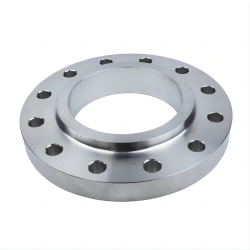 | 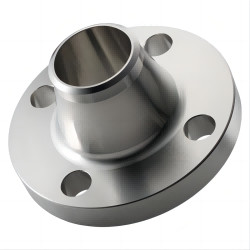 | 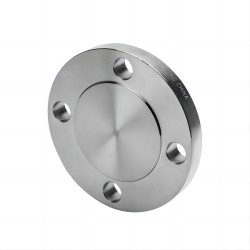 |
| slip on flange | weld neck flange | blind flange |
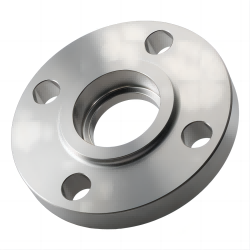 | 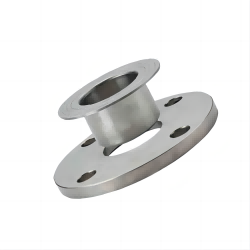 | 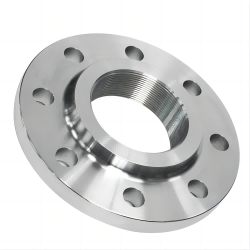 |
| socket weld flange | lap joint | threaded flange |
This is the most common stainless steel grade. Nonmagnetic with 18% Cr and 8% Ni. We offer dual grade material, which has the improved weldability of low carbon content as well as the higher rating of straight 304. It should be noted that 304H is recommended for high temperature applications (over 800degF).
A high carbon version of the most widely used and versatile stainless steel in the flange industry. 304H is an austenitic chromium stainless steel with a carbon content ranging from.04 to.10 to aid heat resistance in high temperature applications. It also has all of the general characteristics and service properties of standard grade 304 stainless steel.
As 304 stainless steel is a popular chromium-nickel stainless steel with excellent corrosion resistance, heat resistance, low temperature strength, and mechanical properties, it is widely used. It is corrosion resistant in the atmosphere; however, if it is in an industrial environment or heavily polluted areas, it must be cleaned on a regular basis to avoid corrosion. Suitable for food processing, storage, and transportation. Has good weldability and processing properties. Plate heat exchangers, bellows, household goods, building materials, chemicals, food industry, and other applications.
After 304/L, this is the most common grade of stainless steel, though 316/L may be more readily available due to industry demands. 316 has a higher corrosion resistance than 304 because it contains 18% Cr, a minimum of 10% Ni, and Molybdenum. We offer dual grade material, which has the improved weldability of low carbon content as well as the higher rating of straight 316. It should be noted that 316H is recommended for high temperature applications (over 800degF).
Grade 316H, like 304H, is a high carbon variant of regular grade 316 stainless steel with a small percentage of molybdenum for use in marine grade applications. This austenitic stainless grade, like its cousin grade 304H, has a higher carbon content for use in higher temperature service. It is still commercially available, despite its less common use.
In seawater and other media, 316L stainless steel flange has a better anti-corrosion effect than 304. As a result, it is also known as "marine grade" stainless steel, but it is not resistant to warm sea water.
Sulfuric acid, phosphoric acid, formic acid, and acetic acid resistant 316 stainless steel flange. Marine, pumping, chemical production, food industry, irrigation, and other stainless steel pipeline systems are examples of applications.
An austenitic chromium grade containing molybdenum that is similar to grade 316 except for higher stress resistance, increased tensile strength, higher service in elevated temperature, and general resistance to corrosion from chloride, sulfuric solutions, or other corrosive media. For a more optimal weld requirement, the low carbon option (L) can be selected.
A stainless grade with excellent workability, used in heat exchanger applications and projects with high salinity and elevated temperatures. When compared to more common stainless grades such as 304 and 309, this grade contains more chromium and nickel and has better oxidation and corrosion resistance.
An austenitic grade stainless with more than 4 or 5 times the titanium content of carbon, with a maximum titanium value of 0.70%. This material has a high intergranular corrosion resistance and is commonly used in high heat aerospace applications such as aircraft jet engine manifolds and exhaust components.
A stainless steel with a trace of columbium and tantalum added for stabilization. This austenitic alloy, which is commonly used in the combined high heat and corrosion environments of refineries, power generation, and airline service, retains better properties in corrosive environments than similar alloys 321 and 317.
As we all know, stainless steel flanges are known for their high corrosion resistance. This is due to the elements of Chromium, and as Cr increases, so will the resistance.
Molybdenum additions, on the other hand, improve corrosion resistance in reducing acids and resistance to pitting attack in chloride solutions. To suit the environment, different grades of stainless steel with varying Cr and Mo compositions are required to be alloyed.
Corrosion and stain resistance
Easy to maintain
gleaming familiar luster
Steel Hardness
There are forged and cast types. However, in most cases, forged type is used.
B16.5 Dimensional standard for steel pipe flanges and flanges fittings
B16.47 Large diameter steel flanges
AWWA C207 Steel Pipe Flanges for Waterworks Service
The primary distinction between these two austenitic grades is the presence of up to 3% molybdenum (Mo) in 316 stainless steel versus trace levels in type 314. This increases the alloy's corrosion resistance even further.
CHROME Flanges
A corrosion-resistant material with a low nickel content and just enough chromium to reduce oxidation. F11, F22, F5, and F9 are popular grades under the A182 specification.
DUPLEX Flanges
Having trouble deciding between stainless and alloy? What about having the best of both worlds? SSM provides duplex in forged and plate forms, including grades 2205, F51, F53, and F60.
SSM is committed to meeting all of your integrated piping solutions development needs, including any customized jobs, with over 30 years of experience in special metal product development, manufacturing, and marketing. SSM is proud to offer quick, dependable service at a reasonable price.
Contact: Sino Special Metal Co., Ltd.
Phone: 86-19527792928
E-mail: sales@ssmsteel.com
Whatsapp:86-19527792928
Add: Mudu town Jinfeng South Road, Wuzhong District, Suzhou City, Jiangsu Province
We chat
